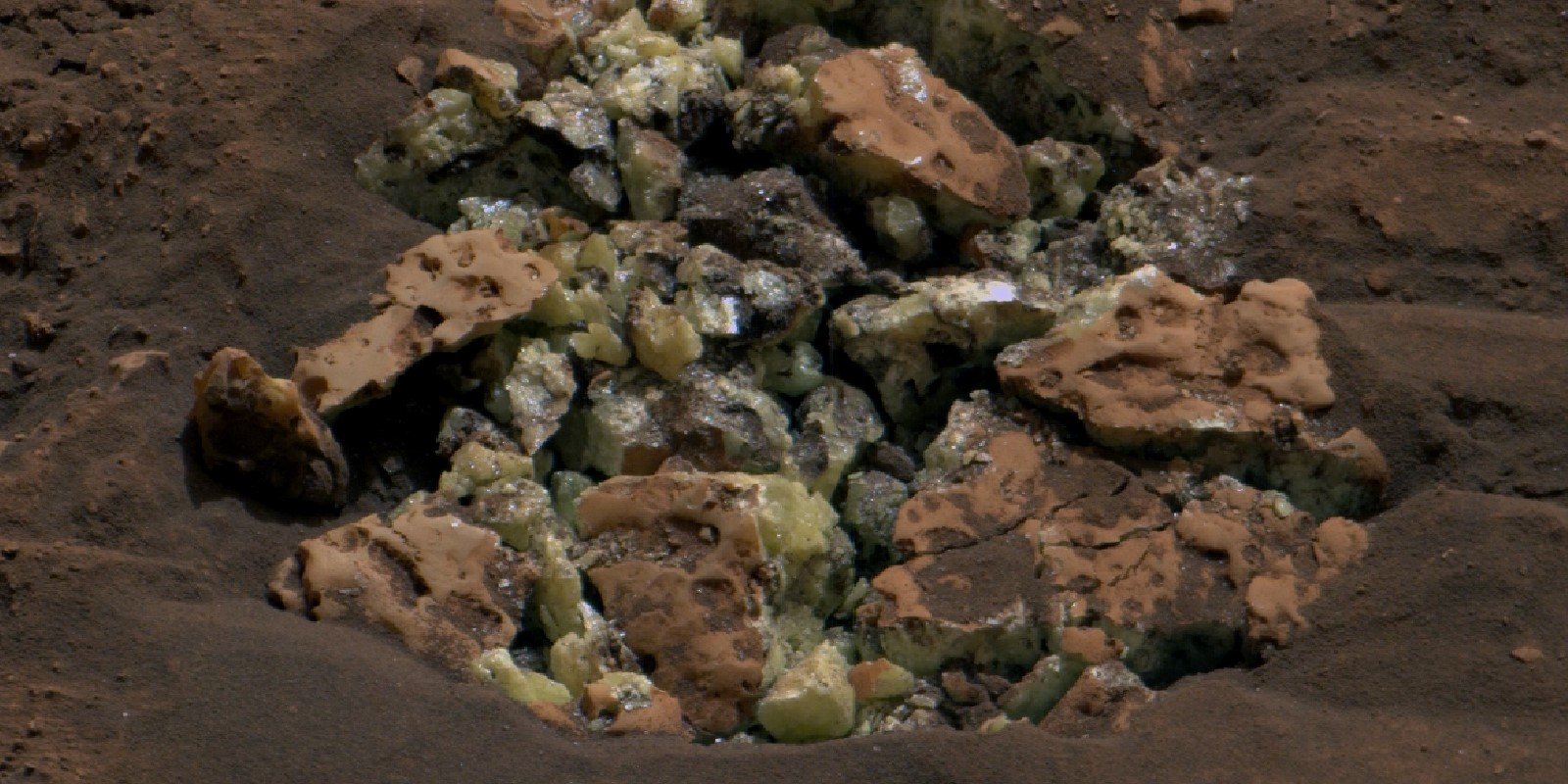The Curiosity rover has found something surprising: rocks made of pure sulfur.
NASA revealed the find in a release last week, describing how the rover drove through the Gediz Vallis Channel, a formation thought to have been carved out by a river about three billion years ago. The channel is interesting because its ridges offer a good view of the many layers of Martian rock.
The canal is a known source of sulphates: salty stuff that forms when water evaporates. The presence of sulphates is another reason why we visit the Gediz Vallis canal.
While Curiosity was busy doing its work, the rolling lab crushed a rock. Upon closer inspection, the rock was found to be made entirely of pure sulfur.

Yellow sulfur crystals were discovered after NASA’s Curiosity spacecraft drove over a rock on May 30, breaking it open. Credit: NASA/JPL-Caltech/MSSS – Click to enlarge
Curiosity also saw many more rocks that, from the outside, looked like the chunk of pure sulfur it had crushed.
Sulfur only forms under specific conditions, so it’s tempting and unexpected to find a lot of it in one place.
“Finding a field of rocks made of pure sulfur is like finding an oasis in the desert,” exulted Ashwin Vasavada, Curiosity project scientist at NASA’s Jet Propulsion Laboratory in Southern California. “It shouldn’t be there, so now we have to explain it. Discovering strange and unexpected things is what makes planetary exploration so exciting.”
NASA’s report does not contain a theory about the presence of sulfur.
But it does provide some analysis of what Curiosity saw in the Gediz Vallis Channel: evidence of a number of different processes going on in the landscape.
“Since Curiosity’s arrival at the canal earlier this year, scientists have been investigating whether ancient floodwaters or landslides formed the large debris piles that are emerging from the bottom of the canal here,” the post said, before going on to analyze that both likely played a role. “Some of the piles were likely left by violent floodwaters and debris, while others appear to be the result of more localized landslides.”
The condition of the debris Curiosity found supports this hypothesis: Some of the debris found in the hills near the channel is “round like river stones,” while other parts are “strewn with more angular rocks that may have been deposited by dry avalanches.”
To think about that question and the sulfuric situation, Curiosity took out its drill and made a new hole in the Red Planet. The target for this—the rover’s 41st such foray into Mars—was a rock named “Mammoth Lakes,” chosen because it was close to the sulfuric rocks but larger and less brittle. The sample collected by the drill is now being stored in Curiosity for consideration by the rover’s Sample Analysis at Mars (SAM) Instrument Suite. ®
